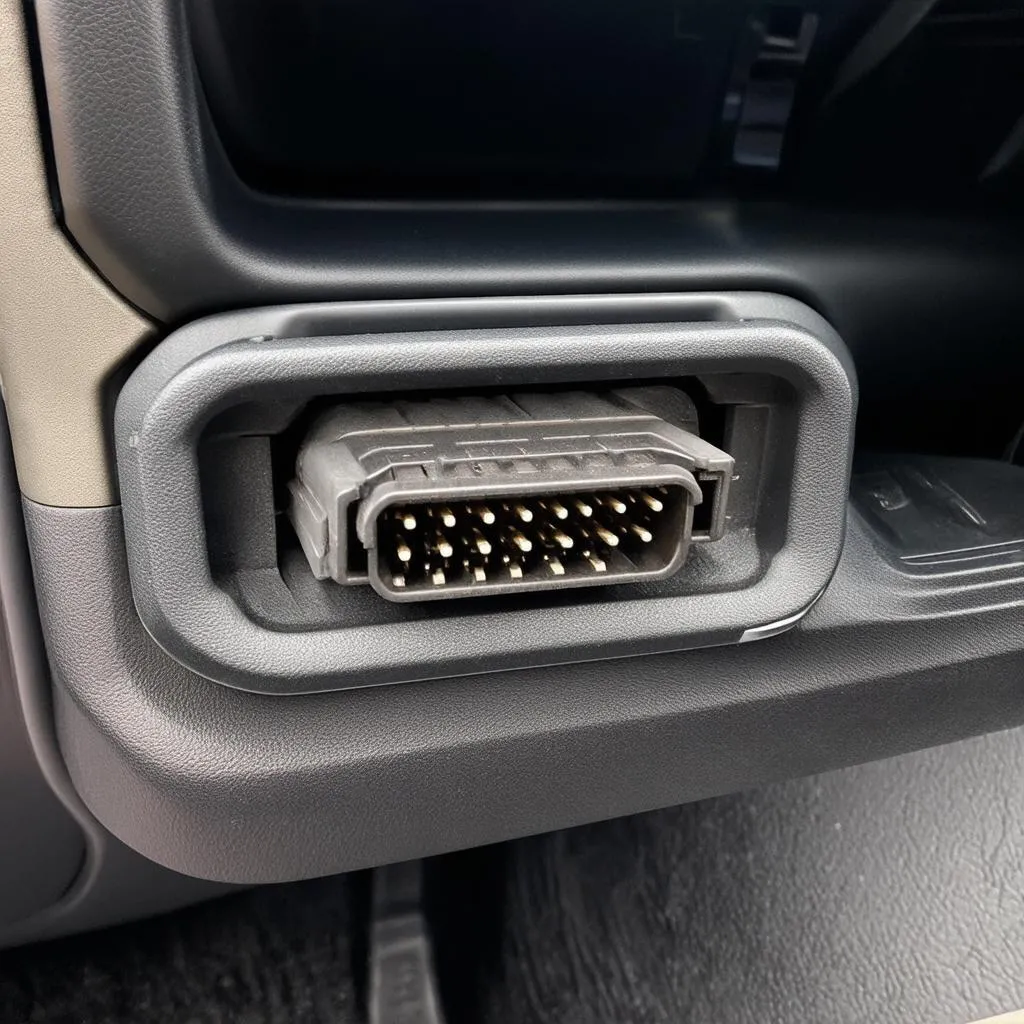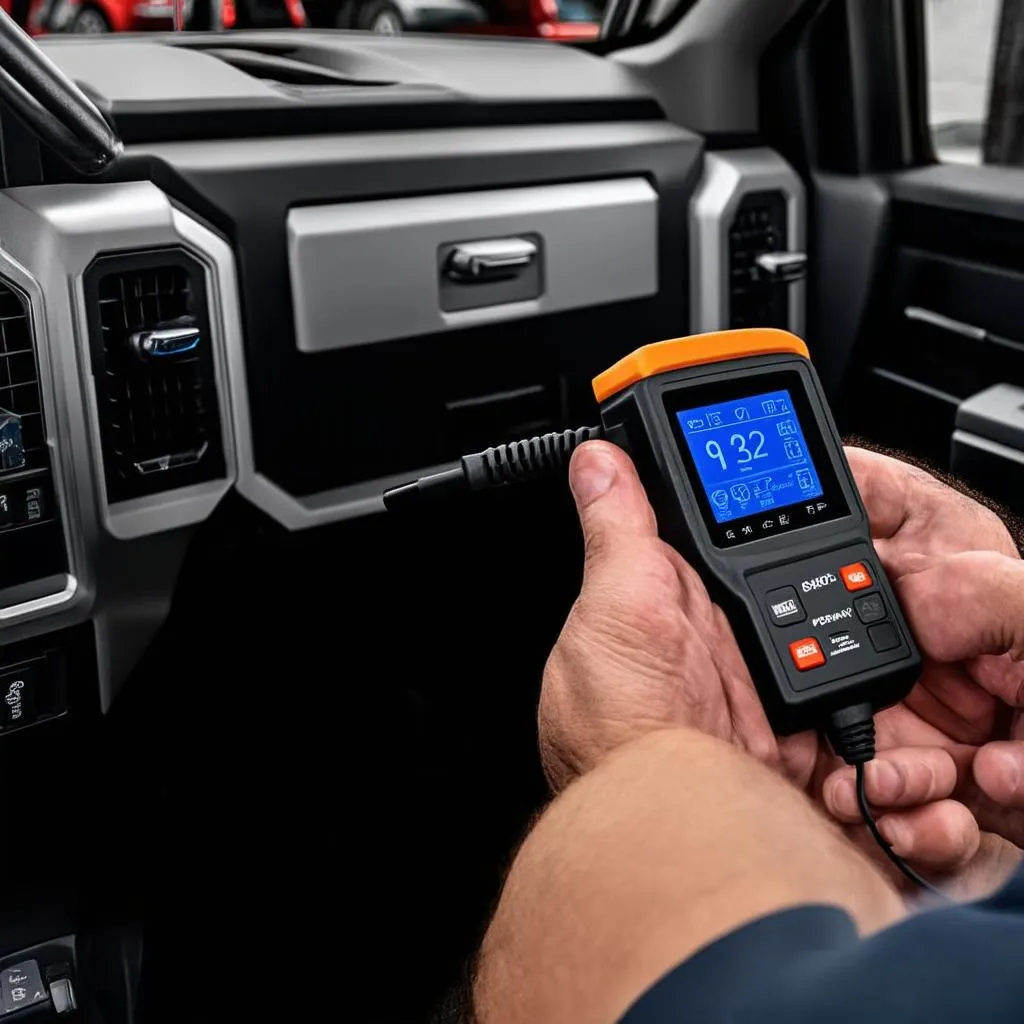Ever felt that pang of confusion when your check engine light pops up, and you just want to quickly plug in your OBD scanner? You scramble around under the dash, muttering under your breath about elusive technology. Don’t worry, we’ve all been there! This guide will quickly point you to your 2019 Ford F150’s OBD port location and explain everything you need to know about it.
What’s the Deal with OBD Ports Anyway?
Before we dive into the ‘where,’ let’s quickly address the ‘what.’ The OBD port, or On-Board Diagnostics port, is like a window into your truck’s soul (or at least its engine). It allows you to connect a scan tool or code reader to access diagnostic information about your vehicle’s systems. Think of it as the language your truck uses to tell you what’s wrong.
Where is the OBD Port on a 2019 Ford F150?
For the 2019 Ford F150, the OBD port is generally located under the driver’s side dash, near the parking brake pedal. It’s usually a black, trapezoidal port with a 16-pin connector.
Can’t find it? Don’t worry, it happens to the best of us! Sometimes, the port might be hidden behind a small panel or tucked away a little higher. Refer to your owner’s manual for the precise location in your specific F-150 model.
 OBD port
OBD port
Why is Knowing Your OBD Port Location Important?
Knowing where your OBD port is located can save you time and hassle in various situations:
- DIY Diagnostics: Plug in your OBD2 scanner to read and understand those pesky check engine lights.
- Maintenance and Repairs: Mechanics use this port for diagnostics, software updates, and troubleshooting.
- Performance Tuning: Enthusiasts use the OBD port to adjust performance settings and monitor vital engine data.
OBD2 Scanners and Your F-150: A Powerful Duo
Speaking of OBD scanners, these handy tools can empower you to take charge of your vehicle’s health. From basic code readers to advanced professional-grade scanners, there’s a wide range of options available. A good scanner can help you:
- Read and Clear Diagnostic Trouble Codes (DTCs): Decode those cryptic codes and identify the source of potential issues.
- Monitor Real-Time Engine Data: Keep an eye on parameters like engine RPM, coolant temperature, and fuel pressure for a better understanding of your engine’s performance.
- Perform System Tests: Some scanners allow you to test specific components like oxygen sensors or evaporative emissions systems.
 Mechanic using OBD2 scanner
Mechanic using OBD2 scanner
FAQs about Your Ford F-150 OBD Port:
Q: What if I still can’t locate my OBD port?
A: Don’t hesitate to consult a qualified mechanic or your Ford dealership. They have the expertise to pinpoint its location quickly.
Q: Can I use any OBD2 scanner with my F-150?
A: While most standard OBD2 scanners will work, certain advanced features might require specialized scanners compatible with Ford vehicles.
Q: Can I damage my truck by using an OBD2 scanner incorrectly?
A: While it’s generally safe, always double-check the scanner’s instructions and avoid forcing connections to prevent potential damage.
Beyond the OBD Port: More Resources for Your F-150
Need more information about your Ford F-150 or have other car-related questions? Check out these other helpful resources on our site:
- “Understanding Your Ford F-150 Dashboard Lights”
- “The Ultimate Guide to Ford F-150 Maintenance”
- “Choosing the Right OBD2 Scanner for Your Needs”
Get in Touch for Expert Automotive Support
Need help with installing diagnostic software or have a pressing car repair question? Our team of expert automotive technicians is available 24/7 to assist you. Contact us via WhatsApp at +84767531508, and let us help you get back on the road with confidence!